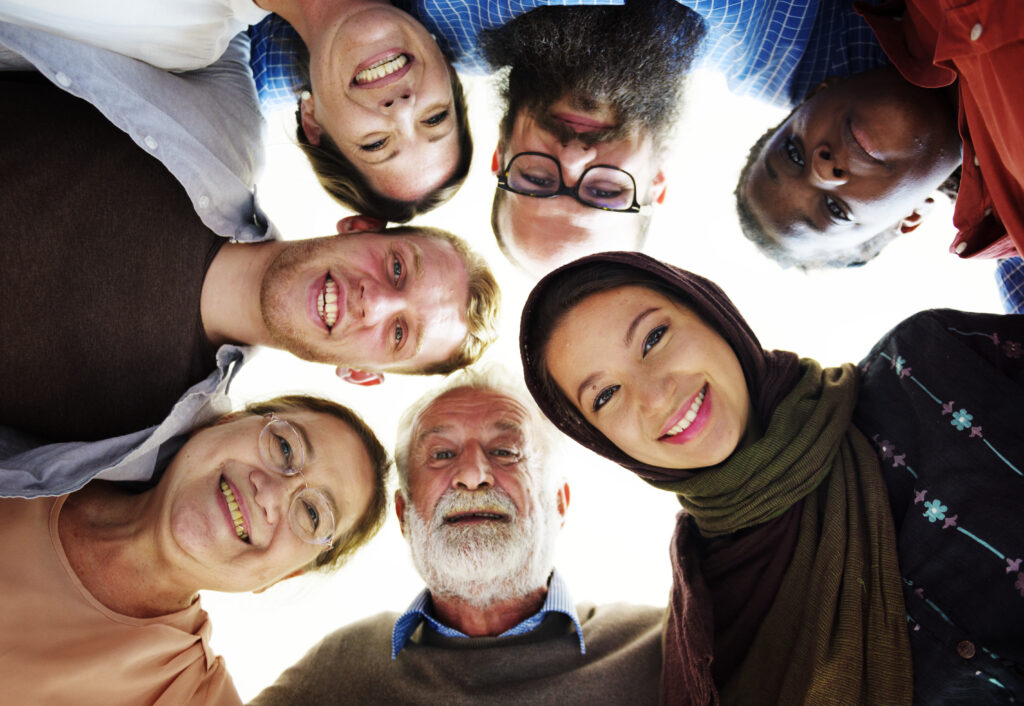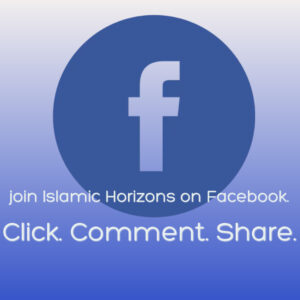ISPU’s American Muslim Poll 2022 presents an updated demographic profile of American Muslims

By Dalia Mogahed and Erum Ikramullah
November/December
Fielded between mid-February and mid-March, the Institute for Social Policy and Understanding’s (ISPU) “American Muslim Poll 2022: A Politics and Pandemic Status Report” provides a snapshot of American Muslims, as well as Americans of other faiths and no faith two years into the Covid-19 pandemic as we enter a new phase: living with the virus.
In its sixth installment, this poll presents an updated demographic profile of Muslim Americans, a pre-midterm election exploration of several hot-button issues (e.g., gun control and climate change) and an updated Islamophobia Index among American faith and non-faith groups. Based on the research, we offer a selection of recommendations to various stakeholders in a position to address some of the identified challenges facing American Muslim communities.
Characteristics of Muslim Americans
• More Likely to Be Young and Low Income, but Just as Likely to be College-Educated
Muslim Americans are younger than all the groups surveyed. About one-quarter of them are between 18 and 29 years old, compared with 2%–12% of the other groups surveyed. Moreover, 7% are aged 65 or older, compared with 22%–39% of the other groups. A younger community is more likely to contribute to the labor force, pay taxes and grow their families. Furthermore, a younger Muslim community means that its youngest members came of age when their community was been targeted and surveilled, never knowing a pre-9/11 America.
Muslim Americans are also the most likely faith community to have low income. One-third of them (33%) have a total household income of $30,000 or less, compared with 12%–26% of the other groups surveyed. About one-fifth of them (22%) have a total household income of $100,000 or more, on par with most of the other groups. Finally, among those aged 25 and older, Muslim Americans (46%) are just as likely as all other groups, except Jews (60%), to have a college degree or higher.
• Job Creators
Roughly one in ten Muslims (8%) report being self-employed or owning their own business. This is just as likely or more likely than the other groups. Self-employed Muslims employ an average of eight workers, resulting in an estimated 1.37 million jobs created.
• On Par with Other Faith and Non-Faith Groups in Military Service
Roughly 83% of Muslims are U.S. citizens, which is the least likely of all other groups (92%–99%). But despite this, they are as likely as others to serve in the military (11% of Muslims, 10% of Catholics and Protestants, 13% of white Evangelicals, and 9% of both the nonaffiliated and the general public).
• Across Age and Race, They Remain among the Most Devoted to Their Faith
Seven in ten Muslim Americans say religion is very important to them, second only to white Evangelicals (83%) and more likely than all the other faith groups (35%–65%). Muslims of all ages were equally likely to rate religion as “very important” to their daily life, suggesting that devotion to faith will endure in the next generation. Muslim Americans of different races and ethnicities were also equally likely to hold this view, suggesting that devotion to faith is a common factor unites this diverse community.
• The “In sha’ Allah Voter” Gap Closes
Among Muslims who are eligible to vote, 81% are registered, as compared to eligible Protestants (85%), the nonaffiliated (79%) and the general public (84%). Muslim men are more likely than women to be registered (88% vs. 72%, respectively), presenting an opportunity to direct get out the vote (GOTV) efforts to the latter.
In 2016, ISPU identified a segment of the Muslim community as the “in sha’ Allah voter,” those who say they intend to vote but haven’t registered. For the first time in six years, we find no difference between the percentage intending to vote (79%) and the percentage registered to vote (81%). Previously, we found the proportion who actually voted was roughly 20% less than the proportion who said they intended to vote, signaling the need for GOTV campaigning even after people are registered.
• Internalized Islamophobia on the Rise
For the fourth year, we measured the Islamophobia Index in regard to the level of the public endorsement of five negative stereotypes associated with this country’s Muslims. The general public scored 25 (on a scale of 0 to 100), on par with 27 in 2020. Muslim Americans scored 26 on the Islamophobia Index, higher than Jewish Americans (17), Protestants (23), the nonaffiliated (22), Catholics (28) and white Evangelicals (30). For Muslims, these scores have increased from 18 (2018) to 26 (2022).
Further analysis reveals that higher Islamophobia Index scores among Muslims are driven primarily by Muslims who identify as “white.” In 2020, white Muslims showed increased Islamophobia with a score of 27, followed by an even larger increase in 2022 with a score of 40, significantly higher than white Evangelicals (30). Further research is needed to explain why there has been such a large increase in Islamophobia among white Muslims.
Endorsing negative stereotypes about one’s own community is referred to as “internalized oppression.” According to ISPU scholar Dr. Muniba Saleem (associate professor in media psychology, Intergroup Communication and Diversity, the University of California), “There are well-documented studies showing that minorities can internalize the negative stereotypes of their group and that can influence their self-esteem, psychological distress, motivation, and performance (David et al., 2019; Siy & Cheryan, 2013; Steele et al., 2002). Other research has examined the negative consequences of media stereotypes on minorities’ self-esteem and experiences of shame and embarrassment (Ramasubramanian et al., 2017; Schmadet et al., 2015), as well as concerns of how the majority group will view them (Fujioka, 2005; Tsfati, 2007).”
Compared with older Muslims, internalized Islamophobia is more prevalent among younger Muslims who have lived most of their post-9/11 lives in a country that has demonized their identity in popular culture, news media, political rhetoric and policy. Research suggests that this steady drumbeat of bigoted ideas and state actions have a detrimental impact on the target group’s self-image and mental health.
Another noteworthy and alarming finding was the disproportionately negative views among white Muslims, who are also the most likely to report experiencing “regular” religious discrimination. Some studies on internalized racism have surprisingly found that endorsing negative stereotypes about one’s own group is associated with a higher locus of control.
This suggests that internalized prejudice may actually be a defense mechanism against the trauma of bigotry at the hands of the dominant group by agreeing with those in power, but believing that one has the choice to not be like those tropes. More research is needed to fully understand the why and how of internalized Islamophobia.
• Remain the Most Likely to Report Experiencing Religious Discrimination
Roughly six in 10 (62%) Muslim Americans report facing religious discrimination in the past year, more likely than all other groups surveyed and on par with levels of discrimination reported in the past five years. About half of the Jewish Americans reported facing religious discrimination, making them the next group most likely to do so compared with the other groups (13%–32%).
Among those who reported facing religious discrimination in the past year, we asked about whether it occurred in various settings. We find Muslims were more likely than the general public to experience religious discrimination when applying for a job (37% vs. 6%, respectively), interacting with law enforcement (38% vs. 10%, respectively), at the airport (44% vs. 3%, respectively), seeking healthcare services (27% vs. 8%, respectively), and on social media from social media platforms themselves (46% vs. 36%, respectively).
Muslims were also more likely to face religious discrimination in interpersonal interactions. Roughly four in 10 Muslims (43%) reported facing discrimination from co-workers, more often than Jews (29%) and the general public (23%). Additionally, 56% of Muslims who report experiencing discrimination said it came from other social media users, on par with the 51% of Jews and more likely than the general public (45%).
• Muslims Families Remain the Most Likely to Have Child Bullied for Their Religion
As noted in 2017 and 2020, Islamophobia’s impact isn’t limited to adults. Their children are also impacted in the form of bullying. In 2022, we find that 48% of Muslim families with school-age children reported having a child who faced religious-based bullying during the past year. This is more likely than Jewish families (13%) and the general public (18%). One-fifth of Muslim families report that the bullying occurred nearly every day. When asked who bullied their child, the parents mentioned students and adults, both online and in person.
Dalia Mogahed is director of research at the Institute for Social Policy and Understanding in Washington, D.C. Erum Ikramullah is research project manager at ISPU.
Tell us what you thought by joining our Facebook community. You can also send comments and story pitches to [email protected]. Islamic Horizons does not publish unsolicited material.
